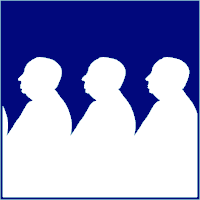Swiss Solar Airplane Project
Solar Impulse is a Swiss long-range experimental solar-powered aircraft project, and also the name of the project's two operational aircraft.[2] The privately financed project is led by Swiss engineer and businessman André Borschberg and Swiss psychiatrist and balloonist Bertrand Piccard, who co-piloted Breitling Orbiter 3, the first balloon to circle the world non-stop.[3] The Solar Impulse project's goals were to make the first circumnavigation of the Earth by a piloted fixed-wing aircraft using only solar power and to bring attention to clean technologies.[4] The aircraft is a single-seated monoplane powered by photovoltaic cells; it is capable of taking off under its own power. The prototype, often referred to as Solar Impulse 1, was designed to remain airborne up to 36 hours.[5] It conducted its first test flight in December 2009. In July 2010, it flew an entire diurnal solar cycle, including nearly nine hours of night flying, in a 26-hour flight.[6] Piccard and Borschberg completed successful solar-powered flights from Switzerland to Spain and then Morocco in 2012,[7] and conducted a multi-stage flight across the US in 2013.[8][9] A second aircraft, completed in 2014 and named Solar Impulse 2, carries more solar cells and more powerful motors, among other improvements. On 9 March 2015, Piccard and Borschberg began to circumnavigate the globe with Solar Impulse 2, departing from Abu Dhabi in the United Arab Emirates.[10] The aircraft was scheduled to return to Abu Dhabi in August 2015 after a multi-stage journey around the world.[11] By June 2015, the plane had traversed Asia,[12] and in July 2015, it completed the longest leg of its journey, from Japan to Hawaii.[13] During that leg, the aircraft's batteries sustained thermal damage that took months to repair.[14] Solar Impulse 2 resumed the circumnavigation in April 2016, when it flew to California.[15][16] It continued across the US until it reached New York City in June 2016.[17] Later that month, the aircraft crossed the Atlantic Ocean to Spain.[18] It stopped in Egypt[19] before returning to Abu Dhabi on 26 July 2016, more than 16 months after it had left, completing the approximately 42,000-kilometre (26,000-mile) first circumnavigation of the Earth by a piloted fixed-wing aircraft using only solar power.[20]
